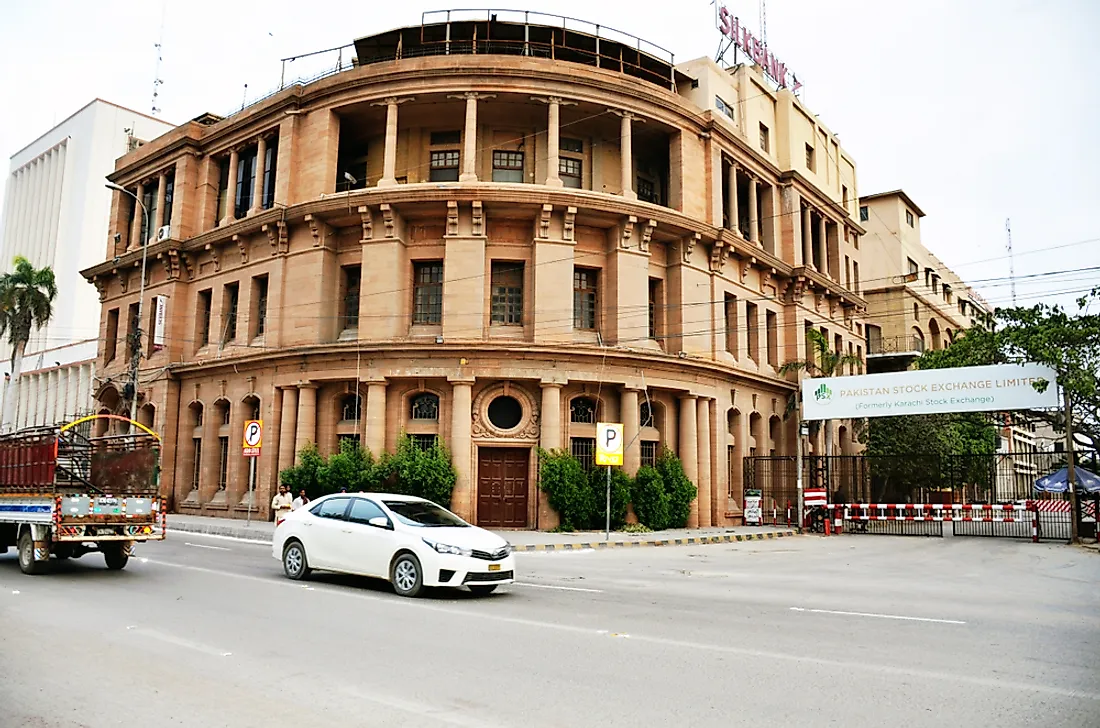The Economy Of Pakistan

Pakistan has a mixed economy with privately-owned and state-owned businesses regulated by government policy. It is a developing economy and considered one of the “Next Eleven”, a list of countries with the potential of becoming the biggest economies in the world. Currently, the economy of Pakistan is the 43rd largest in the world.
In 2015, its nominal gross domestic product (GDP) was $271 billion GDP per capita was $1,429. This does not, however, take into account the informal economy which makes up approximately 36% of all economic activity. This country has a workforce of 57.6 million and an unemployment rate of 6.5%. Of these employed individuals, 43% work in agriculture. This is followed by manufacturing (13.3%), retail and wholesale (9.2%), and transport and communication (7.3%).
Leading Industries Of Pakistan
The leading industry of Pakistan is the services sector, which contributes 54.9% of the GDP. Agriculture, although employing 43% of the workforce, makes up only 25.1% of the GDP. The leading industry products include: textiles, food processing, pharmaceuticals, construction materials, automobiles, and clothing.
Top Export Goods And Export Partners Of Pakistan
In 2014, Pakistan exported $28.3 billion worth of goods, making it the 67th largest export economy in the world. Its principal exports include: house linens ($3.23 billion), rice ($2.24 billion), non-retail cotton yarn ($2.04 billion), non-knit men’s suits ($1.32 billion), and heavy woven cotton ($1.08 billion). A large percentage of its exports go to the following countries: the US ($3.57 billion), China ($2.77 billion), Afghanistan ($2.2 billion), Germany ($1.7 billion), and the UK ($1.69 billion).
Top Import Goods And Import Partners Of Pakistan
The 2014 imports to Pakistan totaled $47.4 billion, giving this country a negative trade balance of $19.1 billion. A negative trade balance means that the country imported more than it exported. Its major imports include: refined petroleum ($8.19 billion), crude petroleum ($5.19 billion), palm oil ($1.88 billion), scrap iron ($891 million), and coal briquettes ($678 million). A large portion of its imports come from the following countries: China ($9.9 billion), the United Arab Emirates ($6.6 billion), Saudi Arabia ($4.08 billion), Kuwait ($2.82 billion), and India ($2.16 billion).
Challenges Faced By The Economy Of Pakistan
Economic growth in Pakistan has been hindered by years of war and political conflict, a rapidly increasing population, and low levels of direct foreign investment. Additionally, 21% of the population live below the poverty line. Pakistan’s negative trade balance has been increasing the country’s deficit and decreasing its reserves. Every year, the negative trade balance grows as imports exceed exports. Part of the reason for the reliance on imports is that the country’s underdeveloped infrastructure and industry do not allow for growth. Many of the industries here have been state-owned for a number of years, resulting in inefficiency and reduced profits.
Future Economic Plans
Despite these challenges, the economy of Pakistan has accomplished 4.71% growth in GDP, which is expected to increase to 5.4% by 2018. In order to combat slow economic growth, the government has been working to privatize a large number of industries. This move is expected to reduce the budget deficit and attract foreign investment. Both of these are necessary for improved infrastructure and industry, which are critical to economic growth. The International Monetary Fund (IMF) has removed the country from an “in crisis” status and its debt outlook has been labeled stable.











